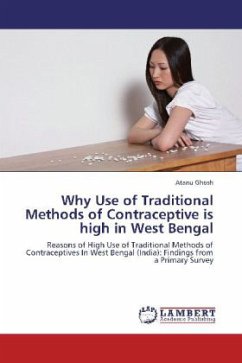The contraceptive behavior among the married couple in West Bengal always drew the attention of demographers with an unexplained question why the use of traditional methods of contraceptive is higher in West Bengal? The recent round of National Family Health Survey (NFHS-3) shows that the current use of any traditional method of contraceptive is 21.3 percent compared to the national average of 7.8 percent. Large scale demographic surveys like NFHS and DLHS could not give pin pointed answers other than showing some differentials or co-factors. Therefore it was decided to conduct a primary survey to unfold the hidden reason behind the high use of traditional methods. Both quantitative and qualitative methods were used. It is found that contraceptive evaluation is found to be the most important factor for method choice, followed by contraceptive goal and contraceptive competence.
Bitte wählen Sie Ihr Anliegen aus.
Rechnungen
Retourenschein anfordern
Bestellstatus
Storno








